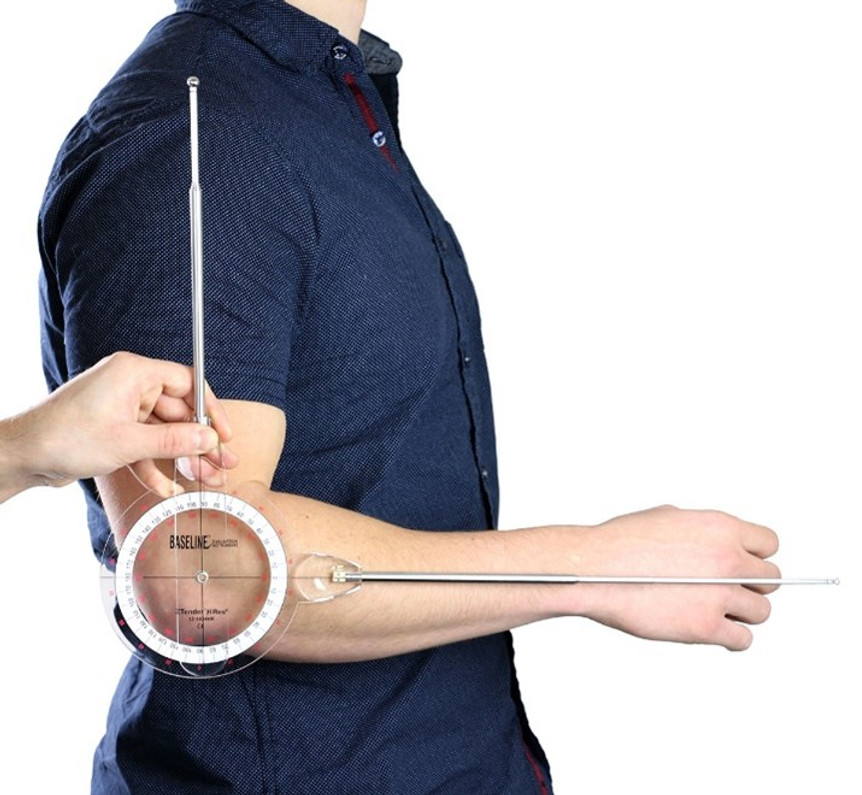Measuring Range of Motion Using Goniometers
Accurately assessing the range of motion (ROM) of patients is crucial for physical therapists to make informed clinical decisions and develop effective treatment plans. However, challenges often arise in pinpointing specific anatomical landmarks necessary for precise goniometric measurements. This can lead to inaccuracies in determining the stationary arm, movement arm, and axis, hindering the reliability of the assessment.
To overcome these challenges, physical therapists can utilize specialized tools like goniometers equipped with innovative features to enhance accuracy. One such tool is the Baseline Plastic Absolute+Axis Goniometer – 360 Degree Head – 12-inch Arms. This goniometer incorporates an integrated Absolute+Axis® at the end of one arm, establishing a true vertical or horizontal reference point for measurements. By eliminating the need for approximation or visual estimation of alignment, this feature minimizes measurement variability and allows practitioners to focus on correctly positioning the goniometer arms and the patient's body.
The Absolute+Axis® goniometer facilitates precise measurements across various joints, including shoulder and hip rotation (internal, external), cervical flexion, extension, rotation, and side bending, as well as hamstring flexibility and active ROM. This capability enhances the reliability of assessments, enabling therapists to tailor treatment plans more effectively to individual patient needs.
Another valuable tool for accurate ROM measurement is the Baseline® XTender® Hi-Res® 360° ISOM Goniometer. This goniometer is designed to measure the axis and ROM of both large and small joints with exceptional precision. Featuring a 360-degree head with three easy-to-read scales, including a primary scale with 1° increments, it allows therapists to capture subtle changes in joint movement accurately.
Moreover, the stainless-steel arms of the XTender® goniometer are extendable from 12.5 inches to 33 inches, accommodating measurements for larger joints or a broader range of motion. This flexibility makes it suitable for diverse patient populations and clinical scenarios, ensuring reliable and consistent ROM assessments across various anatomical regions.
Incorporating these advanced goniometric tools into clinical practice empowers physical therapists to obtain precise and repeatable ROM measurements, facilitating more accurate assessment of patient progress and the formulation of tailored treatment interventions.
Recent Posts
-
Exploring the Fulfilling Path of Occupational Therapy: A Career with Meaning and Impact
Occupational Therapy, often abbreviated as OT, is a profession that revolves around helping individu …May 2nd 2024 -
Empowering Stress Relief: Harnessing the Power of Exercise for Well-being
Stress is an inevitable facet of life, impacting our well-being if left unchecked. While in small do …May 1st 2024 -
Enhance Your Finger Dexterity with FingerWeights
In physical fitness, there exists a plethora of tools and techniques aimed at strengthening various …Apr 30th 2024



